john adams
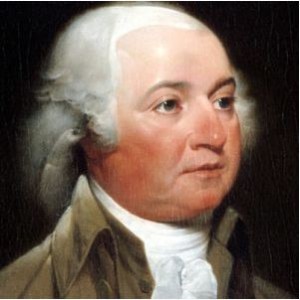
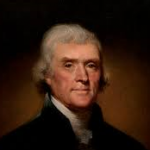 With the election of Thomas Jefferson as third president, on February 17, 1801, came the first peaceful transfer of power from one political party to another in the United States. Nevertheless, the election was an unusual one. By this time, Jefferson had helped to draft the Declaration of Independence, had served in two Continental Congresses, as minister to France, as secretary of state under George Washington and as John Adams’ vice president. These credentials probably made him the best person for the job in the entire world.
With the election of Thomas Jefferson as third president, on February 17, 1801, came the first peaceful transfer of power from one political party to another in the United States. Nevertheless, the election was an unusual one. By this time, Jefferson had helped to draft the Declaration of Independence, had served in two Continental Congresses, as minister to France, as secretary of state under George Washington and as John Adams’ vice president. These credentials probably made him the best person for the job in the entire world.
While it was obvious that Jefferson was the best man for the job, vicious partisan warfare was the name of the game during the campaign of 1800 between Democratic-Republicans Jefferson and Aaron Burr and Federalists John Adams, Charles C Pinckney and John Jay. The ongoing battle raged between Democratic-Republican supporters of the French, who were involved in their own bloody revolution, and the pro-British Federalists who wanted to implement English-style policies in American government. The Federalists hated the French revolutionaries because of their overzealous use of the guillotine and, as a result, were less forgiving in their foreign policy toward the French. They pushed for a strong centralized government, a standing military, and financial support of emerging industries.
Jefferson’s Democratic-Republicans, on the other hand, preferred limited government, complete and absolute states’ rights and a primarily agricultural economy. They feared that Federalists would abandon revolutionary ideals and revert to the English monarchical tradition. When Jefferson was secretary of state under Washington, he opposed Secretary of the Treasury Hamilton’s proposal to increase military expenditures and resigned when Washington supported the leading Federalist’s plan for a national bank.
A bloodless, but ugly campaign ensued, in which candidates and influential supporters on both sides used the press, often anonymously, as a forum to fire slanderous volleys at each other. It sounds a lot like some of our election campaigns of today. Then came the laborious and confusing process of voting, that began in April 1800. Individual states scheduled elections at different times, which I think further confuses the situation, and although Jefferson and Burr ran on the same ticket, as president and vice president respectively, the Constitution still demanded votes for each individual to be counted separately. As a result, by the end of January 1801, Jefferson and Burr emerged tied at 73 electoral votes apiece. Adams came in third at 65 votes. While that left Adams out, it left a tie for Jefferson and Burr. The result created a big problem.
The resulting tie sent the final vote to the House of Representatives. That would not make for an easy decision e ither. A number of those in the Federalist-controlled House of Representatives insisted on following the Constitution’s flawed rules and refused to elect Jefferson and Burr together on the same ticket. The highly influential Federalist Alexander Hamilton, who mistrusted Jefferson, but hated Burr more, persuaded the House to vote against Burr, whom he called the most unfit man for the office of president. Of course, that cause a hatred between Hamilton and Burr that led Burr to challenge Hamilton to a duel in 1804. Burr won the duel when he killed Hamilton. Two weeks before the scheduled inauguration, Jefferson emerged victorious, and Burr was confirmed as his vice president. It was the first of only two times the presidency has been decided by the House of Representatives.
ither. A number of those in the Federalist-controlled House of Representatives insisted on following the Constitution’s flawed rules and refused to elect Jefferson and Burr together on the same ticket. The highly influential Federalist Alexander Hamilton, who mistrusted Jefferson, but hated Burr more, persuaded the House to vote against Burr, whom he called the most unfit man for the office of president. Of course, that cause a hatred between Hamilton and Burr that led Burr to challenge Hamilton to a duel in 1804. Burr won the duel when he killed Hamilton. Two weeks before the scheduled inauguration, Jefferson emerged victorious, and Burr was confirmed as his vice president. It was the first of only two times the presidency has been decided by the House of Representatives.
 His Elective Majesty…sounds almost laughable, but it was almost the proper way to address the President of the United States, a fact that some presidents would probably have liked very much. Some presidents have tried to “rule” as a king would have, so they figure, why not buy in whole heartedly. One such president, who in fact made the original suggestion of title, was none other than, at the time, Vice President John Adams. The idea came from the fact that other heads of state are known by honorifics such as “His Excellency” and such, but United States presidents are only ever Mr President…or “sir” in a pinch. I’m sure that John Adams already had his sights set on becoming president at some point, and the second president of the United States seemed as good a time to run as any…or maybe he liked his own idea very much.
His Elective Majesty…sounds almost laughable, but it was almost the proper way to address the President of the United States, a fact that some presidents would probably have liked very much. Some presidents have tried to “rule” as a king would have, so they figure, why not buy in whole heartedly. One such president, who in fact made the original suggestion of title, was none other than, at the time, Vice President John Adams. The idea came from the fact that other heads of state are known by honorifics such as “His Excellency” and such, but United States presidents are only ever Mr President…or “sir” in a pinch. I’m sure that John Adams already had his sights set on becoming president at some point, and the second president of the United States seemed as good a time to run as any…or maybe he liked his own idea very much.

Apparently, thinking that the office of the President of the United States needed a title with more grandeur, Adams suggested that a president should be referred to as either “His Elective Majesty,” “His Mightiness,” or the slightly excessive “His Highness, the President of the United States of America and the Protector of their Liberties.” Just imagine any of those ideas. Every one of them make me giggle. Just take a moment to say (out loud) those titles in connection with the president…any president. With some presidents, any one of these titles is hilarious, and I’ll let you to decide to whom that statement applies, because these days we all have very specific opinions on the matter.
In those days, Washington was very aware of public fear about their newly won democracy slipping back into a 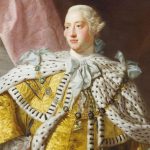 monarchy. They didn’t want this new nation to be too similar to England. They didn’t want this newly free nation to become once again ruled by a different kind of monarchy. So, they refused to allow the president to be titled as anything other than “The President of the United States.” They were right, of course, because the United States is not a “spin-off” of England…like England 2.0. The United States is a very unique nation…unlike any other, before her or after her. This nation was founded by people who refused to be told what to believe anymore. That is why they left England, where they were forced to live under a “state religion.” The nation was founded as “one nation, under God.” We would not have a king, because Jesus was our King of kings. We couldn’t give that title to a mere man.
monarchy. They didn’t want this new nation to be too similar to England. They didn’t want this newly free nation to become once again ruled by a different kind of monarchy. So, they refused to allow the president to be titled as anything other than “The President of the United States.” They were right, of course, because the United States is not a “spin-off” of England…like England 2.0. The United States is a very unique nation…unlike any other, before her or after her. This nation was founded by people who refused to be told what to believe anymore. That is why they left England, where they were forced to live under a “state religion.” The nation was founded as “one nation, under God.” We would not have a king, because Jesus was our King of kings. We couldn’t give that title to a mere man.
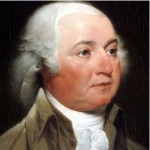
 Historians, who have studied the lives of Presidents John Adams and Thomas Jefferson, agree that while the two men were friends, they also had a long history as “frenemies.” It is fairly common with politicians, because each one has definite ideas about how things should be run. So, the two rivals always had a volatile relationship.
Historians, who have studied the lives of Presidents John Adams and Thomas Jefferson, agree that while the two men were friends, they also had a long history as “frenemies.” It is fairly common with politicians, because each one has definite ideas about how things should be run. So, the two rivals always had a volatile relationship.
Their friendship began in the early days of the nation, despite their vastly different political views. Adams was a strong believer in a strong central government, and Jefferson championed states’ rights. I would imagine that there was a measure of frustration for Adams, as he watched his administration being dismantled in the early years of the Jefferson administration. Nevertheless, as a Conservative, I have to agree with the Thomas Jefferson way of government.
Adams preceded Jefferson as president friend 1797 to 1800. During the Adams presidency, it became very apparent that the two men were very different, and their political views were just as different. The hot-tempered Adams was a firm believer in a strong centralized government, while the genteel Jefferson believed federal government should take a more hands-off approach and defer to individual states’ rights. They clashed loudly and often. As Adams’ vice president, Jefferson was horrified by what he considered to be Adams’ abuse  of the presidential power…particularly his passage of the restrictive Alien and Sedition Acts of 1798. Jefferson abandoned Adams and Washington for his estate at Monticello. There, he plotted how to bring his Republican faction back into power in the presidential election of 1800. After an exceptionally bitter campaign, in which both parties engaged in slanderous attacks on each other in print, Jefferson emerged victorious. It appeared the former friends would be eternal enemies. The former revolutionaries went on to resume their friendship over 14 years of correspondence during their golden years.
of the presidential power…particularly his passage of the restrictive Alien and Sedition Acts of 1798. Jefferson abandoned Adams and Washington for his estate at Monticello. There, he plotted how to bring his Republican faction back into power in the presidential election of 1800. After an exceptionally bitter campaign, in which both parties engaged in slanderous attacks on each other in print, Jefferson emerged victorious. It appeared the former friends would be eternal enemies. The former revolutionaries went on to resume their friendship over 14 years of correspondence during their golden years.
On July 4, 1826, the 50th anniversary of the adoption of The Declaration of Independence, these “frenemies” died on the same day and within five hours of each other. Jefferson and Adams were the last surviving members of the original American revolutionaries who had stood up to the British empire and forged a new political system in the former colonies. When Adams died at the age of 90, his last words, as the country celebrated Independence Day were, “Thomas Jefferson still survives.” Adams was wrong. Jefferson had died five hours earlier at Monticello at the age of 83.

 No country can truly be secure without an army, and the Thirteen Colonies (now the United States) was no different. After the beginning of the Revolutionary War, John Adams began to see the value of an army, so on June 10, 1775, he proposed to Congress, at a meeting in Philadelphia, that the men laying siege to Boston should be considered a Continental Army led by a general. The men who were mostly from New England, had armed themselves and rushed to surround British forces in Boston following the Battle of Lexington and Concord. Adams, who was representing Massachusetts, realized that the military effort would only succeed if the British thought the colonies were united. To achieve his united feel, Adams suggested than they appoint George Washington of Virginia, to command the Continental forces, despite the fact that New Englanders were used to fighting in local militias under officers elected from among their own ranks.
No country can truly be secure without an army, and the Thirteen Colonies (now the United States) was no different. After the beginning of the Revolutionary War, John Adams began to see the value of an army, so on June 10, 1775, he proposed to Congress, at a meeting in Philadelphia, that the men laying siege to Boston should be considered a Continental Army led by a general. The men who were mostly from New England, had armed themselves and rushed to surround British forces in Boston following the Battle of Lexington and Concord. Adams, who was representing Massachusetts, realized that the military effort would only succeed if the British thought the colonies were united. To achieve his united feel, Adams suggested than they appoint George Washington of Virginia, to command the Continental forces, despite the fact that New Englanders were used to fighting in local militias under officers elected from among their own ranks.
Five days later, on June 15th, Adams formally nominated George Washington as commander in chief of the Continental Army. Washington accepted the post on June 16th, and on June 17th, with no rest for the troops, the newly named army fought the Battle of Bunker Hill. John Adam’s wife, Abigail, and son, John Quincy Adams, watched the battle from their hometown of Braintree.
Just as the British had discovered the difficulties of waging war with rowdy and uncontrollable Yankees for soldiers during the Seven Years’ War, Washington was equally unimpressed when he met his supposed army. Just as the British had, he saw “stupidity” among the enlisted men, who were used to the easy familiarity of being commanded by neighbors. Upon arrival outside Boston, General George Washington organized this body of more than 22,000 men, known as the Main Army, into three divisions of two brigades each, promptly 
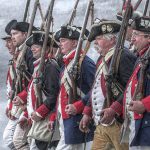 insisting that the officers behave with decorum and the enlisted men with respect. Washington had some success with this first Continental Army, but when the New Englanders went home to their farms at the end of 1775, General Washington had to start fresh with new recruits in 1776. In retrospect, I’m sure Washington had better control over the second Continental Army, because they didn’t know any other leadership style. George Washington remained the commander of the Continental Army until the end of the Revolutionary War.
insisting that the officers behave with decorum and the enlisted men with respect. Washington had some success with this first Continental Army, but when the New Englanders went home to their farms at the end of 1775, General Washington had to start fresh with new recruits in 1776. In retrospect, I’m sure Washington had better control over the second Continental Army, because they didn’t know any other leadership style. George Washington remained the commander of the Continental Army until the end of the Revolutionary War.
 It was a long time coming. An actual house for the President of the United States was a long time coming. Prior to establishing the nation’s capital in Washington DC, the United States Congress and its predecessors had met in Philadelphia (Independence Hall and Congress Hall), New York City (Federal Hall), and a number of other locations (York, Pennsylvania; Lancaster, Pennsylvania; the Maryland State House in Annapolis, Maryland; and Nassau Hall in Princeton, New Jersey). Then, it was decided that our government needed a permanent home. Washington DC was selected.
It was a long time coming. An actual house for the President of the United States was a long time coming. Prior to establishing the nation’s capital in Washington DC, the United States Congress and its predecessors had met in Philadelphia (Independence Hall and Congress Hall), New York City (Federal Hall), and a number of other locations (York, Pennsylvania; Lancaster, Pennsylvania; the Maryland State House in Annapolis, Maryland; and Nassau Hall in Princeton, New Jersey). Then, it was decided that our government needed a permanent home. Washington DC was selected.
The first president who would have an actual government-owned home in Washington DC was President John Adams, and he would only live there for the last year of his only term in office. President John Adams, in the last year of his only term as president, moved into the newly constructed President’s House on November 1, 1800. The President’s House was the original name for what is known today as the White House. Adams and his wife had been living in temporarily at Tunnicliffe’s City Hotel near the half-finished Capitol building since June 1800, when the federal government 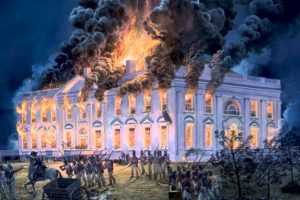 was moved from Philadelphia to the new capital city of Washington DC. When Adams first arrived in Washington, he wrote to his wife Abigail, who was still at their home in Quincy, Massachusetts, that he was pleased with the new site for the federal government and that he had explored the soon-to-be President’s House and liked it.
was moved from Philadelphia to the new capital city of Washington DC. When Adams first arrived in Washington, he wrote to his wife Abigail, who was still at their home in Quincy, Massachusetts, that he was pleased with the new site for the federal government and that he had explored the soon-to-be President’s House and liked it.
Although workmen had rushed to finish plastering and painting walls before Adams returned to DC from a visit to Quincy in late October, the construction was still unfinished when Adams rolled up in his carriage on November 1. However, the furniture from their Philadelphia home was in place and a portrait of George Washington was already hanging in one room. It was a decent start. The next day, Adams sent a note to Abigail, who would arrive in Washington later that month, saying that he hoped “none but honest and wise men [shall] ever rule under this roof.” I wish that 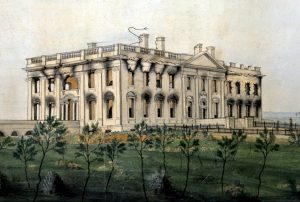 had always been the case, and of course the idea of good and bad presidents are often a matter of opinion.
had always been the case, and of course the idea of good and bad presidents are often a matter of opinion.
The President’s House though new had its issues. Adams was initially very pleased with the presidential mansion, but he and Abigail found it to be cold and damp during the winter. Abigail wrote to a friend saying that the building was tolerable only so long as fires were lit in every room. She also said that on a funny note, she also said that she had to hang their washing in an empty “audience room,” which is the current East Room. Now, that’s quite a thought. During the War of 1812, the White House was set on fire by the British, and had to be repaired.
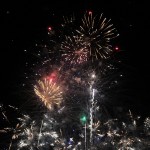 When we think of Independence Day, most of us think of fireworks, picnics, and a day off from work. What I wonder about though, is if most of us know why we shoot off fireworks on this day. The answer may surprise you, because many people did not know this. Even before the signing of the Declaration of Independence, John Adams had a vision of a huge celebration taking place in the city square. He wrote a letter to Abigail Adams on July3, 1776. It said that our Declaration of Independence should be commemorated with “Pomp and Parade, with Shews, Games, Sports, Guns, Bells, Bonfires and Illuminations from one End of this Continent to the other from this Time forward forever more.” The first Independence Day holiday was celebrated on July 4, 1777. On that day, at that time in history, the city was beautifully illuminated. That day felt to him like a day that should be filled with patriotism from a grateful nation to its freedom fighters. And, I believe that is what many people think today, but I also think many people forget about the sacrifice that was made so long ago.
When we think of Independence Day, most of us think of fireworks, picnics, and a day off from work. What I wonder about though, is if most of us know why we shoot off fireworks on this day. The answer may surprise you, because many people did not know this. Even before the signing of the Declaration of Independence, John Adams had a vision of a huge celebration taking place in the city square. He wrote a letter to Abigail Adams on July3, 1776. It said that our Declaration of Independence should be commemorated with “Pomp and Parade, with Shews, Games, Sports, Guns, Bells, Bonfires and Illuminations from one End of this Continent to the other from this Time forward forever more.” The first Independence Day holiday was celebrated on July 4, 1777. On that day, at that time in history, the city was beautifully illuminated. That day felt to him like a day that should be filled with patriotism from a grateful nation to its freedom fighters. And, I believe that is what many people think today, but I also think many people forget about the sacrifice that was made so long ago.
According to some historians, the first fireworks were invented in India, but the first fireworks came to the West by way of China. Most if the early fireworks were simply repurposed military munitions, used to entertain rather than to frighten or kill the enemy, which is fitting in a way, because it was those same military munitions that brought about our freedom from England. From those ancient beginnings, came rockets, by stuffing a container with gunpowder and leaving a hole in one end for propulsion. These were called “ground-rats” or “fire rats” and they were highly unpredictable. That made them somewhat less effective, but as anyone who has ever watch a modern day display go a little haywire, they were also pretty entertaining.
So, why do most people love the fireworks today? Is it because of the great technology that 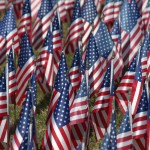 allows it to be synchronized with the music, thereby adding to the festive feel? Is it the continuing patriotism in this country? Or is it simply the splendor of the display…the bright colors and the flashing light show? Well, I suppose it is really a combination if all three of those things. We are a people who love our traditions, and I believe that we are still a very patriotic nation. And, I think we love the tradition that was started by John Adams in 1777. It make us feel patriotic and allows us to honor all our military men and women who have fought through the years to keep our nation free. And really, being a free nation is still what it’s all about. That is the thing we must not forget. Happy Independence Day America!!!
allows it to be synchronized with the music, thereby adding to the festive feel? Is it the continuing patriotism in this country? Or is it simply the splendor of the display…the bright colors and the flashing light show? Well, I suppose it is really a combination if all three of those things. We are a people who love our traditions, and I believe that we are still a very patriotic nation. And, I think we love the tradition that was started by John Adams in 1777. It make us feel patriotic and allows us to honor all our military men and women who have fought through the years to keep our nation free. And really, being a free nation is still what it’s all about. That is the thing we must not forget. Happy Independence Day America!!!

